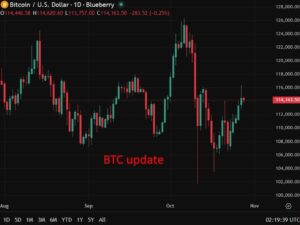
The digital world is evolving rapidly, and two concepts have captured the attention of businesses and innovators alike: NFTs (Non-Fungible Tokens) and the Metaverse. Both are shaping new opportunities for digital ownership, commerce, and engagement. For businesses and clients exploring NFT Development services, understanding how NFTs and the Metaverse work together is crucial for making informed decisions and unlocking new possibilities.
What is the Metaverse?
The Metaverse is a persistent, immersive 3D virtual environment where users interact with each other and digital objects in real time. It blends elements of augmented reality (AR), virtual reality (VR), and blockchain technology to create experiences that mirror, and sometimes surpass, the physical world. The Metaverse can be centralized (controlled by a single entity) or decentralized (powered by blockchain, with no single point of control).
Key Features of the Metaverse
- Immersive 3D environments
- Real-time social interactions
- Digital economies and marketplaces
- Integration of virtual and physical realities
- User-generated content and experiences
What are NFTs?
NFTs, or Non-Fungible Tokens, are unique digital assets stored on a blockchain. Each NFT represents ownership of a specific item — such as art, music, virtual land, or in-game assets — and cannot be replicated or exchanged on a one-to-one basis with another NFT. This uniqueness makes NFTs ideal for proving digital ownership and authenticity.
NFTs in Brief
- Uniqueness: Each NFT is distinct and cannot be replaced by another token.
- Ownership: Blockchain records provide indisputable proof of ownership.
- Transferability: NFTs can be bought, sold, or traded on digital marketplaces.
- Interoperability: NFTs can move across different platforms and virtual worlds.
How NFTs Work in the Metaverse
NFTs are foundational to the Metaverse, serving as the building blocks for digital ownership, identity, and commerce. Here’s how NFTs function within these virtual environments:
Digital Ownership
NFTs act as digital deeds, granting users true ownership of virtual assets such as avatars, land, or collectibles. For example, buying virtual land in a Metaverse platform like The Sandbox or Decentraland is facilitated through NFTs, which serve as property deeds recorded on the blockchain.
Identity and Avatars
Users in the Metaverse often have digital avatars — unique, customizable representations of themselves. These avatars can be tokenized as NFTs, allowing users to prove their identity, personalize their look, and even trade avatar attributes.
In-Game Assets and Collectibles
NFTs power the creation, ownership, and exchange of in-game items such as skins, weapons, and accessories. These assets can be traded in secondary markets, giving them real-world value and enabling new business models for both creators and players.
Event Ticketing and Access
NFTs are used as digital tickets for virtual events, such as concerts or conferences in the Metaverse. These NFT tickets can grant access to exclusive experiences and communities, ensuring authenticity and reducing fraud.
Virtual Real Estate
Users can buy, sell, and develop virtual properties using NFTs. These properties can be rented out, used for hosting events, or developed into digital businesses, creating new revenue streams
NFTs and the Metaverse: A Symbiotic Relationship
NFTs and the Metaverse are not just complementary — they are interdependent. NFTs provide the mechanism for digital ownership and authenticity, while the Metaverse offers a dynamic environment where these assets gain utility and value.
Comparison Table: NFT vs. Metaverse

Business Value of NFTs in the Metaverse
For businesses, the integration of NFTs and the Metaverse opens up new avenues for digital commerce, marketing, and customer engagement. Here are some ways businesses can benefit:
1. New Revenue Streams
- Selling digital goods (art, music, collectibles)
- Monetizing virtual real estate
- Offering exclusive experiences through NFT ticketing
2. Brand Engagement
- Creating branded NFT avatars and merchandise
- Hosting virtual events and product launches
- Building communities around NFT ownership
3. Customer Loyalty and Rewards
- Issuing NFTs as loyalty rewards
- Providing access to exclusive content or communities for NFT holders
4. Intellectual Property Protection
- Using NFTs to verify and protect digital intellectual property
- Preventing counterfeiting and unauthorized use
5. Data Transparency and Security
- Blockchain ensures transparent, tamper-proof records of ownership and transactions
Examples of NFTs and Metaverse Integration
1. Virtual Real Estate Platforms
Platforms like Decentraland and The Sandbox allow users to buy, sell, and develop virtual land using NFTs. Businesses can set up virtual stores, art galleries, or event spaces, reaching new audiences in innovative ways15.
2. Play-to-Earn Games
Games in the Metaverse use NFTs for in-game assets, enabling players to earn real-world value through gameplay. This model drives user engagement and creates new economic opportunities.
3. Virtual Events and Experiences
NFTs are used for ticketing and access control at virtual concerts, conferences, and exhibitions. Attendees can prove their participation and access exclusive content or rewards.
4. Digital Fashion and Wearables
Brands create NFT-based digital wearables for avatars, allowing users to express themselves and showcase their style in the Metaverse. These items can be collected, traded, or used across different virtual worlds.
NFT Development Services: Building the Future
Businesses looking to enter the Metaverse and NFT space need robust NFT Development services to create, manage, and integrate digital assets. Key components of NFT Development services include:
1. NFT Minting
Creating unique digital tokens on blockchain platforms such as Ethereum, Flow, or Solana.
2. Smart Contract Development
Writing and deploying smart contracts to govern NFT ownership, transfer, and utility.
3. NFT Marketplace Development
Building platforms where users can buy, sell, and trade NFTs securely.
4. Metaverse Integration
Connecting NFTs with Metaverse platforms to unlock their full potential — such as linking digital assets to virtual land or avatars.
5. Customization and Branding
Designing NFTs that reflect a brand’s identity and meet specific business goals.
How Businesses Can Use NFTs in the Metaverse
1. Real Estate and Virtual Commerce
Businesses can purchase virtual land, develop branded spaces, and sell digital goods or services. Virtual storefronts and experiences can drive engagement and sales.
2. Marketing and Community Building
NFTs can be used as marketing tools — rewarding loyal customers, granting access to exclusive events, or building communities around shared digital assets.
3. Education and Training
Virtual campuses and classrooms can use NFTs for access control, certification, and rewarding achievements.
4. Entertainment and Media
Musicians, artists, and creators can host virtual shows, sell NFT-based tickets, and distribute digital merchandise.
Challenges and Considerations
While the opportunities are significant, businesses must also consider the challenges:
- Technical Complexity: NFT and Metaverse development requires expertise in blockchain, smart contracts, and 3D environments.
- Regulatory Uncertainty: Laws governing digital assets and virtual economies are still evolving.
- User Adoption: Success depends on building experiences that attract and retain users.
- Security Risks: Protecting digital assets from hacks or fraud is essential.
Future Trends: NFTs and the Metaverse
The relationship between NFTs and the Metaverse is expected to deepen as technology matures. Key trends include:
- Interoperability: NFTs that work across multiple Metaverse platforms, enabling users to carry assets and identities from one world to another.
- Decentralized Governance: Community-driven decision-making through decentralized autonomous organizations (DAOs).
- AI and Personalization: Smarter, more personalized Metaverse experiences powered by AI.
- Sustainability: Efforts to reduce the environmental impact of blockchain technologies.
Getting Started with NFT Development Services
For businesses ready to explore the potential of NFTs and the Metaverse, working with experienced NFT Development service providers is essential. These partners can guide you through:
- Strategy and planning
- Technical development and deployment
- Marketplace integration
- Ongoing support and optimization
Conclusion
NFTs and the Metaverse are reshaping digital interaction, ownership, and commerce. Together, they create a dynamic ecosystem where businesses can connect with audiences in new ways, unlock innovative revenue streams, and build lasting digital communities. As the technology continues to advance, the possibilities for NFT Development services in the Metaverse will only grow.
Ready to explore how NFTs and the Metaverse can benefit your business? Partner with codezeros for expert NFT Development services that bring your digital vision to life. Whether you want to create unique digital assets, build a marketplace, or launch a virtual experience, our team delivers solutions that help you succeed in the evolving digital world.
NFTs and the Metaverse: How They Work Together was originally published in Coinmonks on Medium, where people are continuing the conversation by highlighting and responding to this story.








